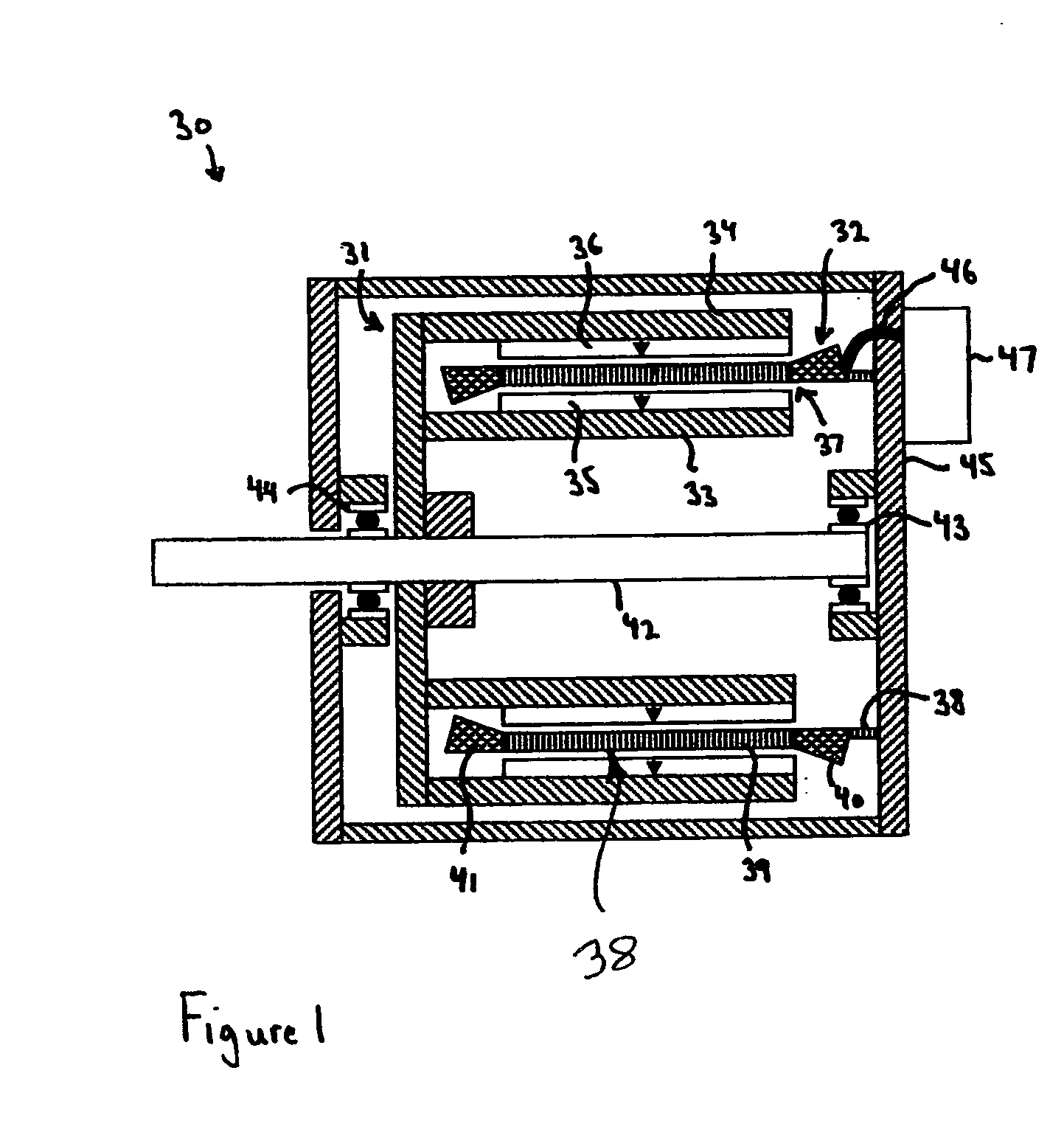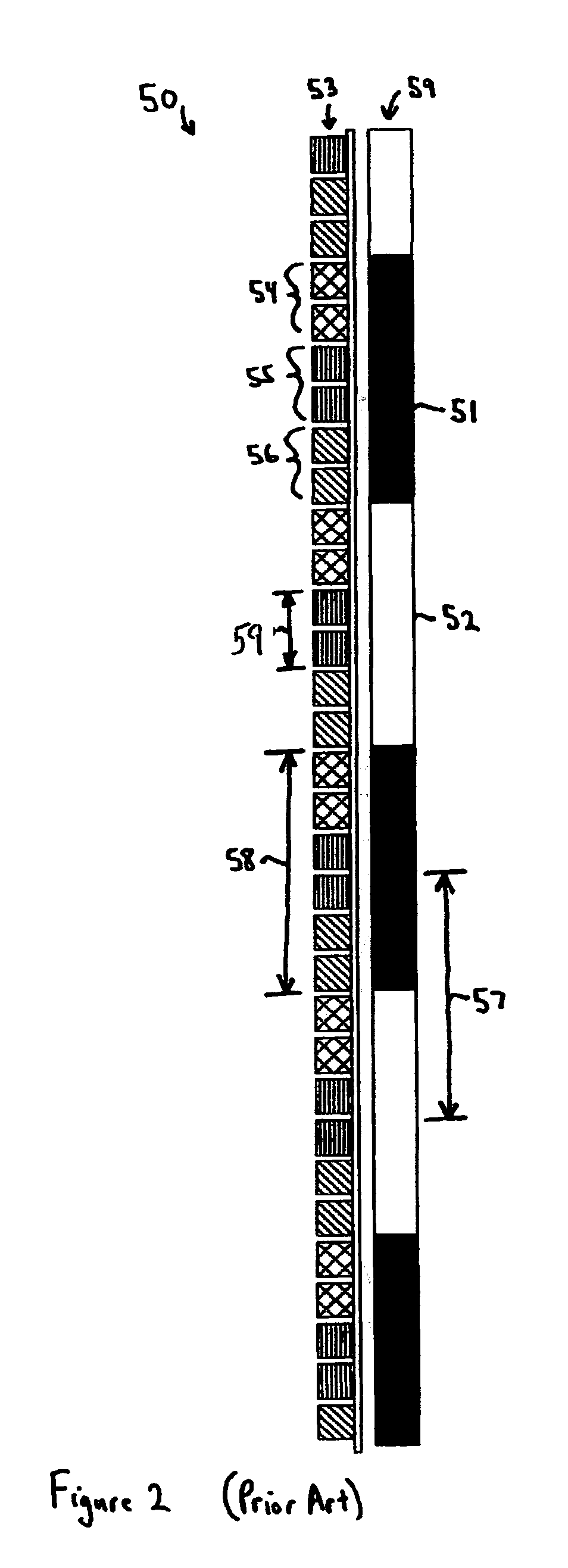Optimized air core armature
a technology of air core and armature, which is applied in the direction of dynamo-electric components, dynamo-electric machines, magnetic circuit shapes/forms/construction, etc., can solve the problems of large flux density reduction and contrary to design principles, and achieves easy manufacturing, increased efficiency and power capability, and reduced armature resistive losses
- Summary
- Abstract
- Description
- Claims
- Application Information
AI Technical Summary
Benefits of technology
Problems solved by technology
Method used
Image
Examples
Embodiment Construction
[0025] Turning to the drawings, wherein like reference characters designate identical or corresponding parts, FIG. 1 shows a brushless air core radial gap motor-generator 30 constructed of a rotor 31 mounted for rotation relative to a stationary stator 32. The rotor 31 is comprised of two spaced apart steel tubes 33, 34 to which circumferential arrays of alternating polarity magnets 35, 36 are attached. The magnets 35, 36 drive magnetic flux across the armature magnetic airgap 37 formed within the rotor 31. Located in the magnetic airgap 37 is an air core armature 38 that is comprised of windings having active length portions 39 and end turn portions 40, 41. The active length portions 39 are located in the magnet airgap 37 such that AC voltage is induced in the windings as the rotor 31 rotates. The end turn portions 40, 41 traverse circumferentially and connect together the active length portions 39. The rotor 31 is connected to a shaft 42 that is journalled by bearings 43, 44. The ...
PUM
 Login to View More
Login to View More Abstract
Description
Claims
Application Information
 Login to View More
Login to View More - R&D
- Intellectual Property
- Life Sciences
- Materials
- Tech Scout
- Unparalleled Data Quality
- Higher Quality Content
- 60% Fewer Hallucinations
Browse by: Latest US Patents, China's latest patents, Technical Efficacy Thesaurus, Application Domain, Technology Topic, Popular Technical Reports.
© 2025 PatSnap. All rights reserved.Legal|Privacy policy|Modern Slavery Act Transparency Statement|Sitemap|About US| Contact US: help@patsnap.com



